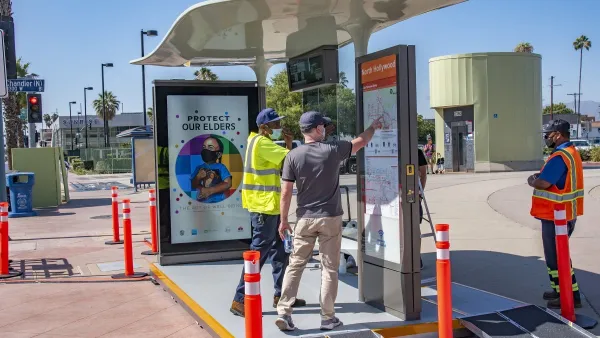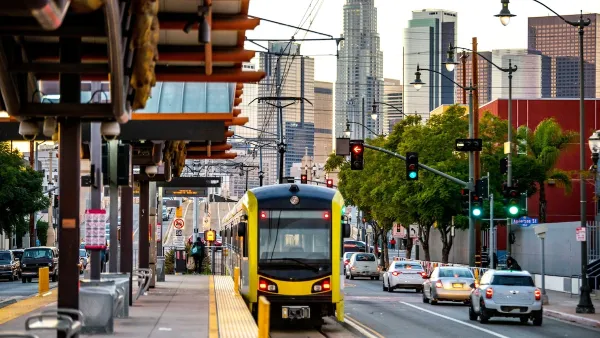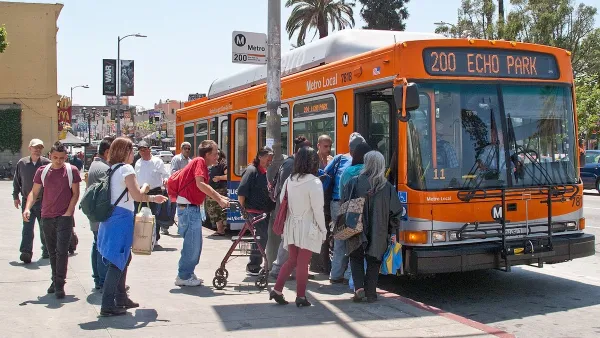Transit rider and Good reporter, Alissa Walker, describes some simple solutions for making transit safer.
When it comes to safety, perception can influence transit ridership just as easily as actual crime rates. Women, in particular, are unlikely to abandon the safety of their personal vehicles in exchange for an unlit bus stop or empty subway platfrom. UCLA urban planning professor, Anastasia Loukaitou-Sideris, who co-authored a 2009 study on how to improve transit safety, says there are low cost solutions transits can employ in these times of budget shortfalls.
"You can put the stop half a block away, but by a business that's open late and that has pedestrian traffic," suggests Loukaitou-Sideris. Personnel training and policy changes can have a positive effect on rider comfort as well. For instance, Loukaitou-Sideris recommends encouraging strong customer service that makes riders feel at ease. Changing to a flag stop system after dark so riders can wait where they feel most comfortable is another possible solution.
Jessica Meany, a Safe Routes to School organizer, points out that traffic safety is as much of a concern as personal safety. Imrovements to the pedestrian environment, such as crosswalks and traffic calming, are important steps. Meany describes her ideal transit stop experience:
"What I'd like to see more are places to wait that are enjoyable, and that provide shade and dignity."
Thanks to Jessica Brent
FULL STORY: How to Make Public Transportation Safer on a Shoestring Budget

National Parks Layoffs Will Cause Communities to Lose Billions
Thousands of essential park workers were laid off this week, just before the busy spring break season.

Retro-silient?: America’s First “Eco-burb,” The Woodlands Turns 50
A master-planned community north of Houston offers lessons on green infrastructure and resilient design, but falls short of its founder’s lofty affordability and walkability goals.

Delivering for America Plan Will Downgrade Mail Service in at Least 49.5 Percent of Zip Codes
Republican and Democrat lawmakers criticize the plan for its disproportionate negative impact on rural communities.

Test News Post 1
This is a summary

Test News Headline 46
Test for the image on the front page.

Balancing Bombs and Butterflies: How the National Guard Protects a Rare Species
The National Guard at Fort Indiantown Gap uses GIS technology and land management strategies to balance military training with conservation efforts, ensuring the survival of the rare eastern regal fritillary butterfly.
Urban Design for Planners 1: Software Tools
This six-course series explores essential urban design concepts using open source software and equips planners with the tools they need to participate fully in the urban design process.
Planning for Universal Design
Learn the tools for implementing Universal Design in planning regulations.
EMC Planning Group, Inc.
Planetizen
Planetizen
Mpact (formerly Rail~Volution)
Great Falls Development Authority, Inc.
HUDs Office of Policy Development and Research
NYU Wagner Graduate School of Public Service





























